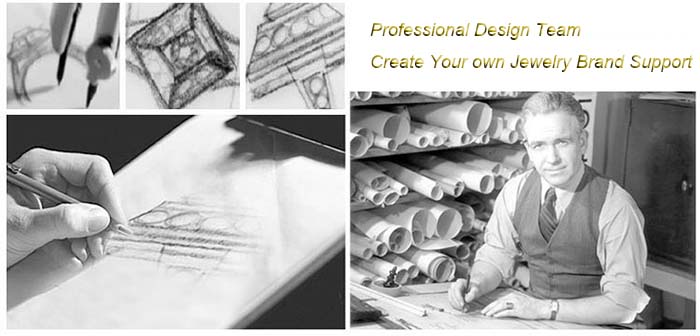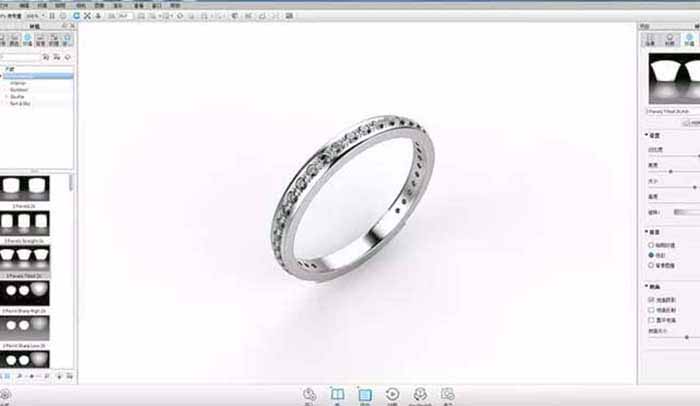Vom digitalen Traum zum greifbaren Schatz: Ein Leitfaden für die 3D STL-basierte Sterling-Silberschmuckproduktion von Jingying
Abstrakt
Die Demokratisierung des Schmuckdesigns ist im Gange. Unabhängige Designer, Boutique -Marken, Und selbst einzelne Schöpfer besitzen jetzt die Werkzeuge, um komplizierte Teile durch 3D -Modellierungssoftware zu konzipieren. Jedoch, die Kluft zwischen einem digitalen Design und einem fertigen, Hochwertiges Schmuckstück aus Sterlingsilber blieb tief und schwer zu durchqueren – bis jetzt. Dieser Artikel bietet eine umfassende, 5.000 Wörter umfassende Erkundung des spezialisierten Service von JINGYING, der Designern die Möglichkeit gibt, ihre 3D-STL-Dateien in exquisit gefertigten Schmuck aus Sterlingsilber umzuwandeln. Wir werden uns mit der kritischen Vorbereitung der STL-Datei befassen, der nahtlose Workflow vom digitalen Upload bis zum physischen Casting, JINGYINGs hochmoderne Herstellungs- und Veredelungsprozesse, und die robusten Qualitätssicherungsprotokolle, die garantieren, dass das Endprodukt die Vision des Designers getreu widerspiegelt. Dieser Leitfaden dient als unverzichtbares Handbuch für jeden Kreativen, der professionelle Fertigung nutzen möchte, um seine individuellen Designs präzise zum Leben zu erwecken, Qualität, und Effizienz.
1. Einführung: Die neue Ära der barrierefreien Luxusfertigung
Der Aufstieg zugänglicher 3D-Designsoftware wie Blender, Nashorn, ZBrush, und Matrix hat eine Welle der Kreativität in der Schmuckwelt ausgelöst. Designer sind nicht mehr durch die Notwendigkeit traditioneller Handschnitzfähigkeiten eingeschränkt; Sie können jetzt digital formen, iterieren, und perfektionieren ihre Kreationen mit beispielloser Freiheit. Noch, das Finale, Der entscheidende Schritt – die Umwandlung dieses perfekten digitalen Modells in ein tragbares Schmuckstück – war oft ein Engpass, Sie erfordern Verbindungen zu spezialisierten Gießereien und ein tiefes Verständnis der Fertigungsbeschränkungen.

JINGYING schließt diese Lücke. Durch das Angebot einer optimierten, transparent, und professioneller Service mit Schwerpunkt auf vom Kunden bereitgestellten 3D-STL-Dateien, JINGYING positioniert sich als ultimativer Partner für den modernen Designer. Dieses Modell stärkt die Schöpfer, So können sie sich auf ihre Kernkompetenz – das Design – konzentrieren und gleichzeitig die Expertise von JINGYING in der Präzisionsfertigung nutzen, Materialwissenschaft, und Qualitätskontrolle. Diese Zusammenarbeit definiert die Art und Weise, wie individueller Schmuck auf den Markt kommt, neu.
2. Die Stiftung: Verständnis der STL-Datei und des Designs für die Herstellbarkeit (DFM)
Der Prozess beginnt und endet mit der Qualität des 3D-Modells. Die STL (STereoLithographie) Datei ist die universelle Sprache des 3D-Drucks, Beschreibung der Oberflächengeometrie eines dreidimensionalen Objekts durch ein Netz aus Dreiecken.

2.1 Die perfekte STL-Datei: Wichtige Spezifikationen für JINGYING
Um einen reibungslosen Übergang von digital zu physisch zu gewährleisten, Designer müssen eine STL-Datei bereitstellen, die den genauen Anforderungen von JINGYING entspricht:
-
Wasserdichtes Netz: Das Modell muss vollständig geschlossen sein, “Mannigfaltigkeit” Oberfläche ohne Löcher, Lücken, oder nicht-mannigfaltige Kanten. Jeder Bruch in der Oberfläche führt zu Fehlern im 3D-Druckprozess.
-
Korrekter Maßstab und Einheiten: Die Datei muss skaliert werden 100% und seine Einheiten klar definiert (Millimeter sind Standard). Ein Ring, der in Zoll entworfen, aber in mm interpretiert wird, ist katastrophal überdimensioniert.
-
Angemessene Wandstärke: Dies ist die wichtigste DFM-Überlegung. Für Sterlingsilber, die gießbar und langlebig sein muss, JINGYING empfiehlt a Mindestwandstärke von 0,8 mm. Dünnere Teile sind extrem zerbrechlich, anfällig für Brüche, und wirft möglicherweise nicht richtig.
-
Unterstützte Details: Groß, Flache Oberflächen können beim Gießen einen Sog erzeugen. Empfindlich, hervorstehende Details (wie dünne Drähte oder Zinken) benötigen ausreichend Unterstützung, um den Einbett- und Gießprozess zu überstehen. Die Ingenieure von JINGYING können Sie beim Hinzufügen subtiler Stützen oder Verdickungselemente beraten, ohne das Design zu beeinträchtigen.
-
Optimierte Polygonanzahl: Ein Netz mit sehr vielen Polygonen erzeugt unnötig große Dateien, die schwer zu verarbeiten sind. Ein Netz mit sehr geringer Polygonzahl führt zu einer Facettierung, nicht glatte Oberfläche. Ideal ist ein optimiertes Netz, das die beabsichtigten glatten Kurven genau darstellt.
2.2 Die JINGYING Design Review und DFM-Analyse
Nach Erhalt einer STL-Datei, Der erste Service von JINGYING ist ein kostenloses Design for Manufacturability (DFM) Rezension. Ihr Team aus erfahrenen Ingenieuren analysiert das Modell für:
-
Strukturelle Integrität: Identifizieren von Bereichen, die zu dünn sind, zu schwach, oder es besteht die Gefahr, dass beim Gießen Luft eingeschlossen wird.
-
Casting-Machbarkeit: Sicherstellen, dass das Design mithilfe des Wachsausschmelzverfahrens erfolgreich reproduziert werden kann.
-
Praktische Tragbarkeit: Bewertung von Faktoren wie Komfort, Gewichtsverteilung, und potenzielle Hakenstellen.
JINGYING stellt dem Designer dann einen detaillierten Bericht zur Verfügung, Vorschläge für Modifikationen zur Verbesserung der Haltbarkeit und Gießbarkeit. Dieser gemeinsame Schritt ist von unschätzbarem Wert, Sie verhindern kostspielige Ausfälle und stellen sicher, dass das Endprodukt sowohl schön als auch robust ist.
3. Der Produktionsworkflow: Vom STL-Upload zum Silver Masterpiece
Sobald die STL-Datei genehmigt wurde, Es gelangt in die optimierte Produktionspipeline von JINGYING.
Schritt 1: 3D Drucken des Wachsmusters
Die genehmigte STL-Datei wird für den 3D-Druck mithilfe einer speziellen Software vorbereitet, die Stützen generiert und das Modell schneidet. JINGYING verwendet eine hohe Auflösung Stereolithographie (SLA) oder Digitale Lichtverarbeitung (DLP) 3D-Drucker mit einem juwelierspezifischen gießbaren Wachsharz. Dieses Harz verbrennt sauber und vollständig, Hinterlässt einen makellosen Hohlraum für das Metall. Dadurch entsteht eine perfekte physische Wachsnachbildung des digitalen Designs.
Schritt 2: Anguss und Formenbau
Das Wachsmodell wird sorgfältig von Hand auf einem zentralen Wachs befestigt “Baum” unter Verwendung von Wachskanälen (Kanäle). Mit diesem Baum können mehrere Teile in einer einzigen Charge gegossen werden. Der Baum wird dann in einen Stahlkolben gelegt, und ein flüssiges Investitionsputz wird um ihn herum gegossen. Der Kolben wird in einen Ofen gestellt, Dabei härtet die Einbettmasse aus und das Wachs ist vollständig ausgebrannt, eine Mulde hinterlassen, Negativform des Schmuckdesigns.
Schritt 3: Guss aus Sterlingsilber
Die Flasche, jetzt eine gehärtete Einbettmasse, wird einer hochmodernen Gießmaschine zugeführt. Granulat aus JINGYINGs zertifiziertem Sterlingsilber 925 werden in einem Tiegel geschmolzen. Mit Zentrifugalkraft oder Vakuumdruck, Das geschmolzene Silber wird in die hohle Einbettform gedrückt, Füllen jedes kleinsten Details der Geometrie der ursprünglichen STL-Datei.
Schritt 4: Entwederung, Schneiden, und Vorbearbeitung
Nach dem Abkühlen, Die Einbettmasse wird in Wasser abgeschreckt, Dadurch bricht es ab und gibt das rohe Silber frei “Baum.” Die einzelnen Schmuckstücke werden mit Präzisionssägen sorgfältig aus dem Baum geschnitten. Anschließend werden sie in einem Magnetbecher mit Stahlkugeln geschüttelt, um die raue Gussoberfläche zu glätten und mit dem Poliervorgang zu beginnen.
Schritt 5: Handveredelung und Polieren
Hier glänzt JINGYINGs Handwerkskunst wirklich. Jedes Stück wird sorgfältig von Hand bearbeitet:
-
Feilen und Schleifen: Hochqualifizierte Handwerker feilen alle Gussrahmenreste ab und schleifen das Stück mit zunehmend feinerer Körnung, um alle Unvollkommenheiten zu beseitigen.
-
Polieren: Das Stück wird auf motorisierten Rädern mit speziellen Poliermitteln poliert (Rouge) um einen spiegelhellen Eindruck zu erzielen, Hochglanz-Finish. Für matte oder satinierte Oberflächen, Dabei kommen unterschiedliche Putztechniken zum Einsatz.
-
Montage: Wenn das Design aus mehreren Komponenten besteht (Z.B., ein Anhänger, der an einer Kette befestigt ist, oder eine Steinfassung), Sie werden in dieser Phase von Juweliermeistern mithilfe von Laserschweißen für Präzision und Festigkeit zusammengebaut.
Schritt 6: Endgültige Qualitätskontrolle und Verpackung
Jedes einzelne Stück wird einer strengen Endkontrolle unter Vergrößerung auf Gussfehler unterzogen, fertig, und Gesamtkonstruktion. Es wird gewogen und gemessen, um sicherzustellen, dass es den Erwartungen des digitalen Modells entspricht. Erst nach Bestehen dieser strengen Qualitätskontrolle wird der Schmuck sorgfältig für den Versand verpackt.
4. Der Jingying -Vorteil: Qualität, Transparenz, und Partnerschaft
Die Wahl von JINGYING für die STL-basierte Produktion bietet deutliche Vorteile, die über die reine Fertigung hinausgehen.
-
Materielle Reinheit: JINGYING verwendet ausschließlich zertifiziertes Sterlingsilber 925, mit Mühlenzertifikaten auf Anfrage erhältlich. Kunden können sich auf die Qualität und den Wert des Materials verlassen.
-
Technologische Investition: Der Einsatz von hochauflösendem 3D-Druck stellt sicher, dass selbst die kompliziertesten Details eines Designs mit erstaunlicher Genauigkeit erfasst werden.
-
Handwerkliche Handwerkskunst: Dabei beginnt der Prozess digital, Es gipfelt in traditionellen Handbearbeitungstechniken, jedem Stück die Seele und Qualität eines handgefertigten Objekts verleihen.
-
Transparente Preisgestaltung: Die Preisgestaltung basiert in der Regel auf dem Endgewicht des Silbers (aus dem 3D-Modell berechnet) zuzüglich einer festen Gebühr für die Herstellung und Veredelung. Dieses transparente Modell ermöglicht es Designern, die Kosten genau zu kalkulieren, bevor sie sich verpflichten.
-
Skalierbarkeit: Dieses Verfahren eignet sich sowohl für Einzelanfertigungen als auch für Kleinserien, Dadurch können Designer ihre Unternehmen effizient skalieren.
5. Abschluss: Den Schöpfer von morgen stärken
Der Service von JINGYING, hochwertigen Schmuck aus Sterlingsilber aus vom Kunden bereitgestellten 3D-STL-Dateien herzustellen, ist mehr als eine Fertigungsoption; Es ist ein kraftvoller Wegbereiter für Kreativität. Es beseitigt die traditionellen Barrieren zwischen Designer und Hersteller, Förderung einer kooperativen Partnerschaft, die auf gemeinsamem Fachwissen basiert.
Für den Designer, Es bietet eine beispiellose Kombination aus kreativer Freiheit und professioneller Ausgabe. Durch den Umgang mit den komplexen Feinheiten der Fertigung, JINGYING ermöglicht es Designern, sich auf das zu konzentrieren, was sie am besten können: innovativ, Entwerfen, und den Aufbau ihrer Marken. Dieses Modell repräsentiert die Zukunft der Schmuckindustrie – eine Zukunft, die digital ist, demokratisch, und den höchsten Qualitätsstandards verpflichtet, wo jede Vision, egal wie komplex, kann in ein greifbares Kunstwerk aus Sterlingsilber verwandelt werden.

